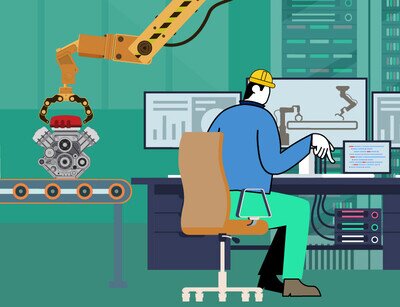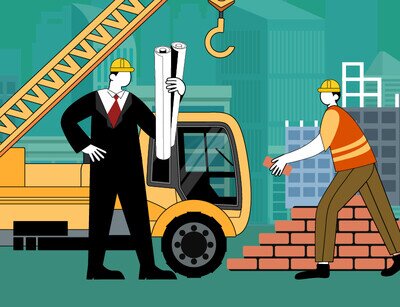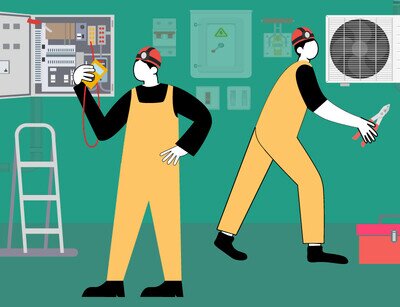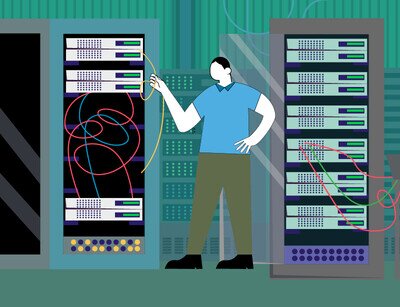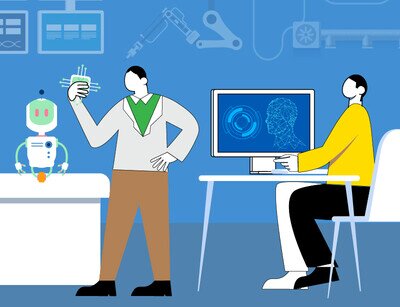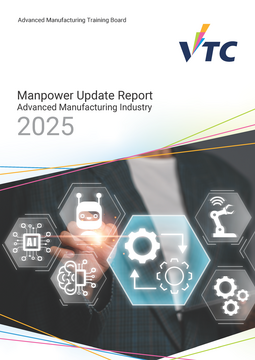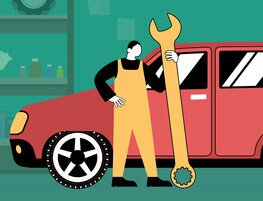Year 2023 Tooltips
Employees
Vehicle Servicing
0
Auto/ Parts Retail
0
Total
0
Vehicle Servicing
0
Vacancy rate: 5.4%
Auto/ Parts Retail
0
Vacancy rate: 2.7%
Total
0
Vacancy rate: 4.8%
All the percentages are rounded to nearest 0.1%.
Vehicle Servicing
0
Vehicle Servicing
0
Turnover rate: 4.8%
Auto/ Parts Retail
0
Turnover rate: 8.9%
Note(s):
The figures did not include unskilled workers of the Vehicle Servicing Sector.
All the percentages are rounded to nearest 0.1%.
Monthly Income Tooltips
All the percentages are rounded to nearest 0.1%.
Monthly Income Tooltips
All the percentages are rounded to nearest 0.1%.
Preferred Education Tooltips
All the percentages are rounded to nearest 0.1%.
All the percentages are rounded to nearest 0.1%.
Preferred Education Tooltips
All the percentages are rounded to nearest 0.1%.
All the percentages are rounded to nearest 0.1%.
Recruitment Difficulties
1st
Lack of candidates with relevant academic qualification and credential
2nd
Unsatisfactory working environment
3rd
Lack of awareness of career opportunities & prospect
Recruitment Difficulties
1st
More choices in the market
2nd
Remuneration package and fringe benefit not attractive
3rd
Lack of candidates with relevant academic qualification and credential / Lack of awareness of career opportunities & prospect
Manpower Demand
Job Level
Technologist
Average Annual Growth
0
2023
Actual
0
2027
Forecast
0
Note(s):
(1) The figures included employees and vacancies.
(2) The manpower forecast is based on the historical manpower survey data, together with the market trends in a longer term, technological developments of the industry and other social-economic determinants.
All the percentages are rounded to nearest 0.1%.
Technician
Average Annual Growth
0
2023
Actual
0
2027
Forecast
0
Note(s):
(1) The figures included employees and vacancies.
(2) The manpower forecast is based on the historical manpower survey data, together with the market trends in a longer term, technological developments of the industry and other social-economic determinants.
All the percentages are rounded to nearest 0.1%.
Craftsman / Specific Services
Average Annual Growth
0
2023
Actual
0
2027
Forecast
0
Note(s):
(1) The figures included employees and vacancies.
(2) The manpower forecast is based on the historical manpower survey data, together with the market trends in a longer term, technological developments of the industry and other social-economic determinants.
All the percentages are rounded to nearest 0.1%.
Manpower Demand
Job Level
Managerial
Average Annual Growth
0
2023
Actual
0
2027
Forecast
0
Note(s):
(1) The figures included employees and vacancies.
(2) The manpower forecast is based on the historical manpower survey data, together with the market trends in a longer term, technological developments of the industry and other social-economic determinants.
All the percentages are rounded to nearest 0.1%.
Supervisory
Average Annual Growth
0
2023
Actual
0
2027
Forecast
0
Note(s):
(1) The figures included employees and vacancies.
(2) The manpower forecast is based on the historical manpower survey data, together with the market trends in a longer term, technological developments of the industry and other social-economic determinants.
All the percentages are rounded to nearest 0.1%.
Operative/ Clerical Support
Average Annual Growth
0
2023
Actual
0
2027
Forecast
0
Note(s):
(1) The figures included employees and vacancies.
(2) The manpower forecast is based on the historical manpower survey data, together with the market trends in a longer term, technological developments of the industry and other social-economic determinants.
All the percentages are rounded to nearest 0.1%.
Report
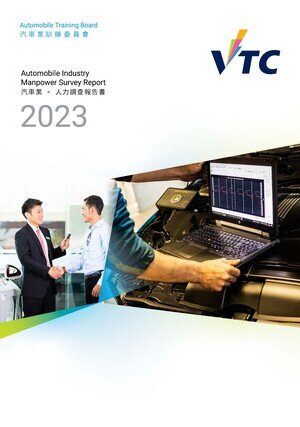
- Automobile
- 2023 Manpower Survey Report
A Rejuvenated Workforce of the Automobile Industry
After suffering from the pandemic for a few years, the automobile industry has managed to maintain the number of people it employs. The total number of employees in the industry has just slightly decreased from 16 941 in 2019 to 16 693 in 2023. However, the industry needs to do its best to encourage more young people to join in order to compensate for the looming retirement wave, particularly at the craftsman level of the vehicle servicing sector. Besides, maintaining a skilled workforce and staying up-to-date with evolving automotive technologies are one of major challenges for the automobile industry.
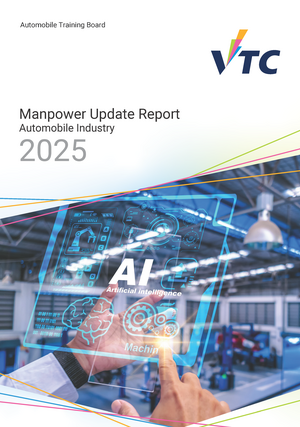
- Automobile
- 2025 Manpower Update Report
The Accelerated Shift to New Energy Vehicles
Outlined in the “Hong Kong Roadmap on Popularisation of Electric Vehicles”, the HKSAR Government’s commitment to achieving zero vehicular emissions by 2050 remains a central driver of industry transformation. By the first half of 2025, global electric vehicle (EV) sales surged, capturing over 25% of the total car market, reflecting a relentless global push towards electrification. In Hong Kong, EVs accounted for over 70% of new private car registrations, highlighting rapid local adoption. Despite this growth, the servicing sector remains dominated by internal combustion engine (ICE) vehicles, sustaining significant demand for their maintenance. For commercial vehicles, the government is advancing trials for electric taxis and hydrogen fuel cell vehicles, diversifying the new energy transport landscape. The industry's evolution now demands a workforce skilled in mechatronics, digital diagnostics, etc., underscoring the need for tailored training programmes to equip students and practitioners with the required skills.





